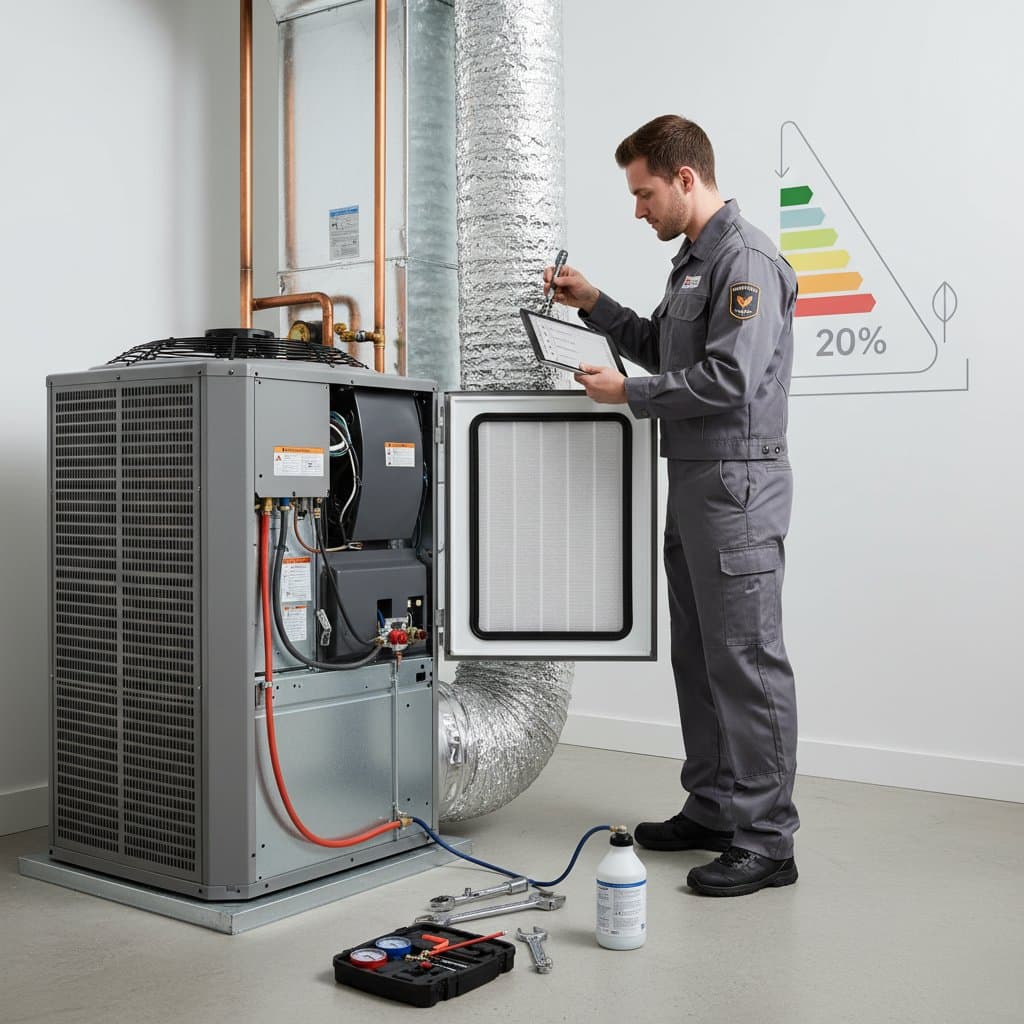The Importance of Fall HVAC Filter Replacement for Better Indoor Air
As cooler temperatures signal the end of summer, homeowners often focus on tasks such as updating wardrobes or inspecting gutters. However, one straightforward maintenance activity can significantly impact comfort and well-being. Replacing the HVAC filter in the fall ensures fresher air circulation, lower utility bills, and prolonged system longevity. Although this task is simple, many overlook it, yet it profoundly influences daily indoor experiences.
Reasons for Seasonal Filter Replacement
A well-maintained filter prevents dust, pollen, and microscopic particles from accumulating within ductwork. When filters become clogged, airflow diminishes, compelling the HVAC system to operate with greater effort. This increased workload elevates energy consumption and accelerates equipment wear. Consistent replacements optimize performance and support uniform temperature distribution throughout living spaces.
Moreover, fresh filters effectively capture airborne allergens that provoke respiratory issues like coughing or sneezing. Households with pets or allergy sufferers benefit particularly from this practice, as it eases breathing. Indoor air quality hinges on the filter's ability to trap contaminants; neglecting replacements allows insidious buildup that no surface cleaner can fully address.
Frequency of Filter Replacements
Standard filters require replacement every one to three months, influenced by factors such as household occupancy, system usage, and local environmental conditions. Residences near ongoing construction or high-traffic roads may necessitate more frequent intervals. Owners of advanced, high-efficiency HVAC units must adhere to manufacturer recommendations, as denser filters saturate more quickly.
Establishing fall as a designated reset period proves effective. During this time, examine the existing filter for signs of discoloration or lint accumulation. Immediate replacement follows if visible debris appears. Incorporating reminders into digital calendars or smartphone applications maintains adherence to the schedule across all seasons.
Detailed Guide to Safe Filter Replacement
- Power down the HVAC system to avoid drawing in loose particles during the process.
- Identify the filter access panel, typically located behind a return air grille or adjacent to the indoor blower assembly.
- Remove the used filter with care to minimize dust dispersal into the surrounding area.
- Note the dimensions indicated on the filter's edge to ensure the correct size for the new one.
- Position the replacement filter so that directional arrows align with the system's airflow path.
- Reattach the panel securely and restore power to the unit.
Individuals sensitive to dust should don a protective mask. Filters may feature rigid frames, requiring gentle handling to prevent injury. Evidence of substantial internal grime warrants consultation with a certified technician for thorough system servicing.
Selecting Appropriate Filter Options
Filters vary in construction and performance capabilities. Basic fiberglass models offer affordability but provide limited particle capture. Pleated varieties, constructed from folded synthetic materials, ensnare finer dust particles and endure longer periods of use. Advanced high-efficiency filters, evaluated by Minimum Efficiency Reporting Value (MERV) ratings, seize ultrafine contaminants; however, they can impede airflow in systems not designed for such density.
Achieve equilibrium between filtration efficacy and system efficiency. A moderate pleated filter suits the majority of residential setups. Prior to selecting higher MERV-rated options, consult an HVAC professional to verify compatibility and prevent performance degradation.
Benefits Observed from Regular Maintenance
Adherents to a seasonal replacement routine frequently report reduced utility expenditures. Unobstructed filters facilitate smooth airflow, enabling shorter operational cycles for the HVAC unit. This efficiency conserves energy while minimizing stress on components like motors and blowers. Participants in online homeowner communities often cite approximately 10 percent savings on monthly bills following diligent filter management.
Enhanced air purity translates to reduced dust accumulation on surfaces and diminished fabric odors. Long-term adherence preserves interior elements, including paint finishes, flooring materials, and sensitive electronics, by limiting particulate deposition.
Budget Considerations and Supportive Technologies
Entry-level filters typically cost a few dollars per unit. Enhanced models with advanced fiber matrices command premium prices, yet their extended durability and superior air purification justify the investment. Evaluate options using a monthly cost-per-use calculation to align with financial constraints.
Suggested visual: A bar chart illustrating average costs against expected lifespans for prevalent filter categories, accompanied by alt text: "Comparison chart of HVAC filter expenses and longevity."
Integration of smart thermostats or dedicated home automation applications monitors system runtime and issues timely replacement notifications. Such innovations eliminate uncertainty and sustain consistency amid demanding schedules.
Addressing Typical Replacement Challenges
Weak airflow post-installation often stems from incorrect filter orientation; verify that arrows point toward the incoming air stream. Mismatched dimensions create gaps that permit unfiltered air bypass, undermining efficiency and wasting resources. Confirm precise fit prior to securing panels.
Unpleasant smells may indicate overdue maintenance or moisture retention within ducts. Activate the fan mode for 10 to 15 minutes immediately after replacement to circulate and dissipate lingering odors.
Integrating Filter Care into Comprehensive Home Maintenance
View filter replacements as essential components of autumn preparations, akin to raking leaves or examining shingles. Combine this with duct vent cleaning, window caulking, and attic insulation assessments. These synergistic efforts sustain superior air quality and reliable comfort as temperatures decline.





